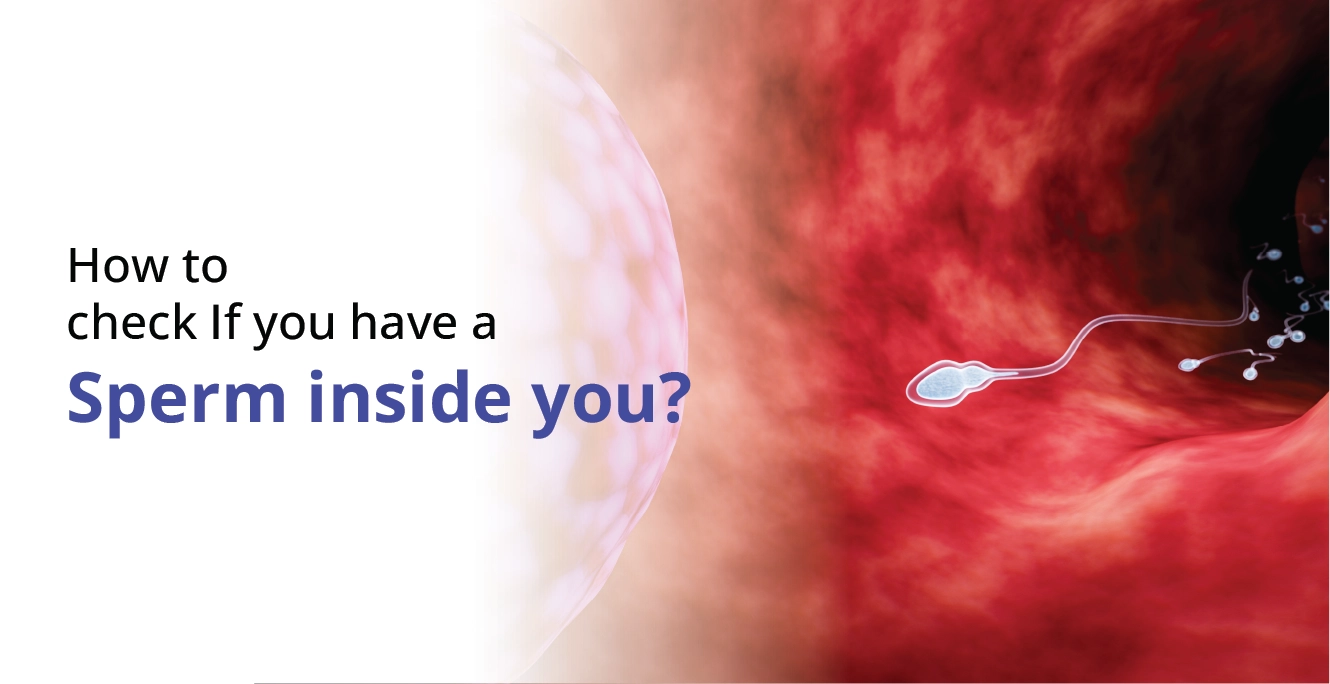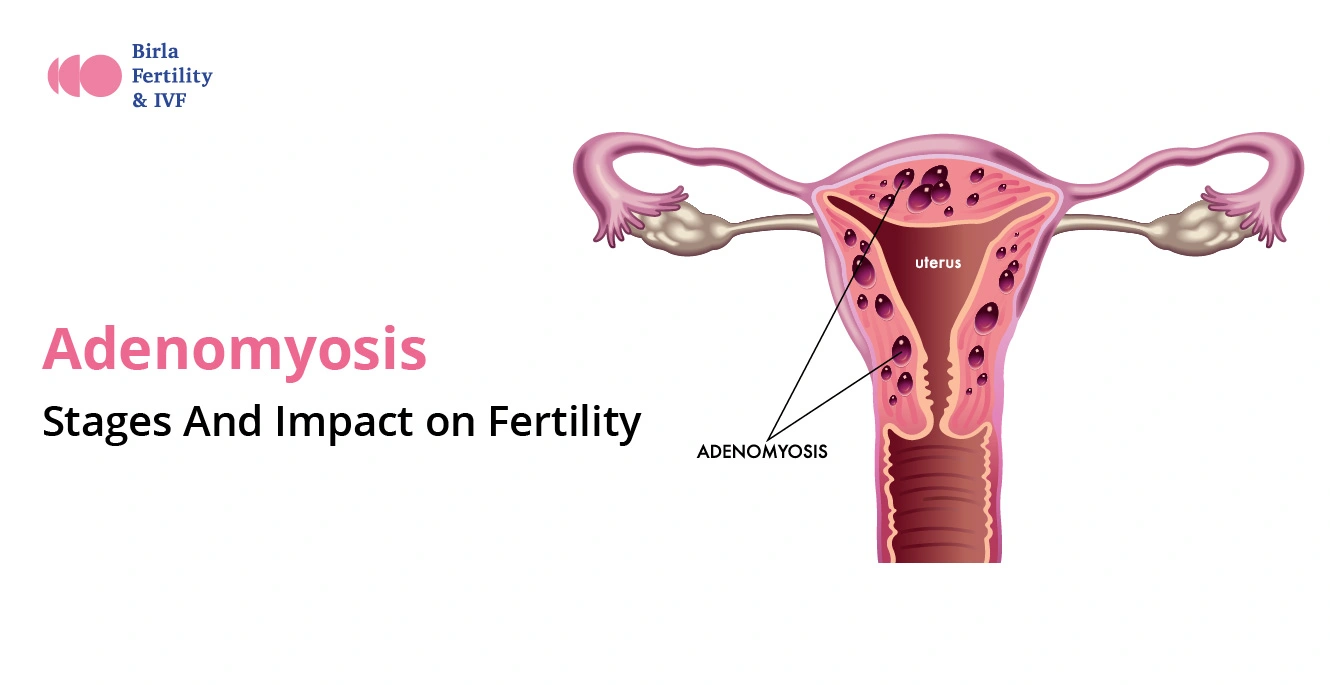
How To Check If You Have A Sperm Inside You?

Table of Contents
- What is a Sperm?
- How Does a Sperm Travel?
- How to Confirm if Sperm has Entered Your Body?
- How to Know if the Sperm Went Inside and Fertilised?
- Medical Confirmation Methods
When you’re trying to conceive, every little detail matters. Although sperm-carrying fluid, known as semen, can be felt entering the vagina after ejaculation, it is impossible to determine whether sperm cells have reached the fallopian tubes, where conception usually takes place.
If you don’t maintain the right position after sex, semen may leak out, even if it has already entered your body. Even so, the only way to know if sperm have reached their destination is when conception takes place and pregnancy symptoms appear. This blog talks about everything–starting from how sperm enters the female body, to how you can increase the chances of sperm entering the body.
What is a Sperm?
The male reproductive cells that are essential to fertilisation are called sperm, or spermatozoa. The testicles produce these tiny, tadpole-shaped cells, which contain half of the genetic material required to create a new life. Millions of sperm are released into the female reproductive system when a man ejaculates, and they start their journey in the direction of the egg.
There are three primary components to each sperm:
- The head is home to the enzymes and genetic material (DNA) required for fertilisation.
- The mitochondria that give the sperm energy to move are housed in the midpiece.
- The sperm’s tail allows it to swim in the direction of the egg.
How Does a Sperm Travel?
Sperm must pass via the uterus, fallopian tubes, and cervix after being ejaculated into the vagina in order to reach the egg. The vagina’s acidic environment and the reproductive tract’s constricted passageways are only two of the challenges sperm must overcome on this difficult voyage. Of the sperm discharged during ejaculation, only a small percentage will reach the egg, and even fewer will be able to fertilise it.
How to Confirm if Sperm has Entered Your Body?
If you’re trying to conceive, then it is normal to be curious to know whether the sperm has entered your body or not. Here are some ways to get an idea. They are not definite, but can give you a fair idea. Let’s see:
Sexual Encounter Circumstances
If you are having unprotected sex, and the man ejaculates inside the vagina, then there is a high likelihood that sperm has entered your body. In some cases, even if the man does not ejaculate inside the vagina, there is a risk of getting pregnant due to the pre-ejaculation fluid.
Traces of Sperm in the Vagina
Semen may be visible close to the vaginal region following sexual activity. Sperm and other seminal fluids are found in the white, sticky substance known as semen. It’s obvious that sperm have entered the body if you see semen oozing from the vagina. Remember that the fluid discharged prior to ejaculation, known as pre-ejaculate fluid, can also contain sperm and result in pregnancy.
Changes in Vaginal Discharge
Many women notice a slight change in the vaginal discharge post intercourse. You will find a whitish or cloudy fluid leaking from the vagina, often mixed with natural vaginal secretions. This suggests that sperm has entered the body.
Physical Sensation
Women might also feel a sense of wetness or leakage soon after sex. It is because semen naturally flows back out of the vagina.
Early Pregnancy Symptoms
If sperm successfully fertilises an egg, early pregnancy signs like missed periods, breast tenderness, nausea, or fatigue may appear after a few weeks. While not an immediate confirmation, they are indicators that sperm entered and conception occurred.
How to Know if the Sperm Went Inside and Fertilised?
If sperm has successfully gone inside and fertilised the egg, you may start experiencing pregnancy symptoms. These symptoms usually appear within a few weeks of conception and can include:
- Changes in vaginal discharge- Some women notice an increase in clear or milky discharge. This happens due to a hormonal shift after conception. It is harmless and helps protect the uterus from facing issues due to infection.
- Spotting- Some women experience light spotting after conception. It is also known as implantation bleeding, which usually occurs when the fertilised egg attaches itself to the uterus lining. It usually happens before your normal days of menstruation.
- Sore or tender breasts- Hormonal changes during early pregnancy can cause breast tenderness or swelling.
- Nausea- Morning sickness, which can occur at any time of the day, is another indicator of pregnancy. It happens because there is an increase in pregnancy hormones, for example, HCG.
- Heightened sense of smell- It is also said that women are sensitive towards certain types of smells.
- Fatigue- Feeling unusually tired or exhausted is a common early sign of pregnancy.
- Pregnancy Tests- There are some home urine tests that can help you determine if you’re pregnant or not.
- Missed Period– A delayed or missed menstrual period is often the first noticeable sign of pregnancy.
Myth Buster!
It’s a widespread myth that you can instantly feel sperm entering your body after intercourse. However, this is not true. Immediate physical sensations cannot confirm sperm presence as no such symptoms exist. Medical tests, like pregnancy tests or semen analysis, are necessary for confirmation.
Medical Confirmation Methods
There are several medical methods available to Confirm whether sperm went inside and if fertilisation has occurred:
|
Method |
Description |
|---|---|
|
Post-coital testing |
This test involves examining cervical mucus under a microscope after sexual intercourse to check for the presence of sperm. |
|
Basal body temperature tracking |
By tracking your basal body temperature daily, you can identify ovulation and determine if sperm has entered the body during your fertile window. |
|
Pregnancy testing |
Home pregnancy tests or blood tests performed by a healthcare provider can detect the presence of the hormone human chorionic gonadotropin (hCG), which is produced after successful implantation of a fertilised egg. |
How to Tell if Sperm Has Leaked Out?
After sexual activity, some semen may naturally flow out of the vagina. Soon after sex, or even a few hours later, you might see a white or hazy fluid leaking out. This occurs because not all of the sperm and fluids that make up semen remain inside. Millions of sperm begin swimming toward the cervix as soon as ejaculation occurs; so leakage does not mean sperm failed to enter. Pregnancy is still possible even if some fluid is expelled. If the discharge is uncomfortable, it can be managed by washing up or using a panty liner.
Can the Sperm Enter if a Man Pulls Out Before Ejaculation?
The pull-out method, also known as withdrawal, is a form of birth control where the man removes his penis from the vagina before ejaculation. While this method can reduce the risk of pregnancy, it is not entirely reliable. There are two main reasons why sperm can still enter the body even if the man pulls out before ejaculation:
-
Premature Ejaculation: If the man does not withdraw his penis in time, ejaculation may occur inside the vagina, allowing sperm to enter the body.
-
Pre-Ejaculate Fluid: Before ejaculation, the penis releases a small amount of pre-cum, which can contain sperm. This means that even if the man pulls out before ejaculation, there is still a risk of sperm entering the body.
Quick Fact!
Emergency contraception pills, often called “morning-after pills”, work best when taken within 72 hours of unprotected sex but remain effective for up to five days. Remember, their efficacy declines over time.
Can You Increase The Chances of the Sperm Entering the Body?
If you are trying to conceive, there are several strategies you can employ to improve the chances of sperm successfully entering the body:
-
Timing intercourse with ovulation: By identifying your fertile window through methods like basal body temperature tracking, cervical mucus monitoring, or using ovulation predictor kits, you can time sexual activity to coincide with your most fertile days.
-
Ejaculating deeply inside the vagina: Depositing semen close to the cervix can help sperm travel more easily through the reproductive tract.
-
Maintaining a supine position post-ejaculation: Lying down for 15-30 minutes after sexual intercourse can help prevent semen from leaking out of the vagina and increase the chances of sperm reaching the egg.
-
Avoiding vaginal washing or douching: Douching or washing the vagina immediately after sex can alter the vaginal pH and remove semen, reducing the chances of successful sperm entry.
Signs of Ovulation
Recognising when ovulation occurs can be essential for those trying to conceive or wanting to understand their reproductive health better. During ovulation, the body undergoes hormonal changes that can result in observable symptoms. Some of these signs include:
-
Changes in Cervical Mucus: Around ovulation, cervical mucus becomes clear, elastic, and slippery, similar to raw egg whites. This type of mucus is more conducive to sperm survival and motility.
-
Mild Cramps: Some women experience mild cramps or twinges in the lower abdomen during ovulation, which may indicate that an egg has been released.
-
Spotting: Light spotting or bleeding can occur when the egg is released from the ovary, signaling that ovulation has taken place.
-
Basal Body Temperature: Your basal body temperature increases slightly (by about 0.5 to 1°F) after ovulation due to increased progesterone levels. Tracking your temperature daily can help identify this pattern over time
Medical and Assisted Reproductive Techniques Techniques
Medical procedures like as intracytoplasmic sperm injection (ICSI) and in vitro fertilisation (IVF) can help couples who are having trouble conceiving by guaranteeing sperm entrance and fertilisation in a controlled laboratory environment. IVF involves taking eggs out of the woman’s ovaries and fertilising them in a petri dish with sperm. To aid in fertilisation, a single sperm is directly inserted into each egg during ICSI. These methods increase the likelihood of successful fertilisation by avoiding the natural obstacles sperm encounter when entering the female body.
When is it Important to Confirm Whether Sperm Went Inside?
It’s critical to acknowledge that each person’s biology is different and that visible symptoms associated with sperm entrance and fertilisation might vary. Different women may experience different signs and symptoms due to hormonal changes, irregular menstrual cycles, and other biological variables. This information is crucial for determining any obstacles, particularly while trying to have a child.
Seeking Medical Advice
If you have been trying to conceive for more than a year (or 6 months if over 35), it’s essential to consult a healthcare provider for personalised advice on fertility and conception. They may recommend fertility testing and evaluation to identify any underlying issues and guide your conception efforts.
|
Test |
Purpose |
|---|---|
|
Semen analysis |
Assesses sperm count, motility, and morphology |
|
Ovarian reserve testing |
Evaluates the quantity and quality of eggs |
|
Hysterosalpingography (HSG) |
Checks for blockages in the fallopian tubes |
|
Laparoscopy |
Examines the reproductive organs for abnormalities |
Additional Considerations for Couples Trying to Conceive
When trying to conceive, it’s essential to focus on overall health and well-being. Consider the following lifestyle factors that can impact fertility:
-
Maintaining a healthy weight
-
Eating a balanced, nutrient-rich diet
-
Exercising regularly
-
Managing stress levels
-
Avoiding smoking, excessive alcohol consumption, and illicit drugs
The psychological aspects of trying to conceive should not be overlooked. Seeking mental health support, joining fertility support groups, and openly communicating with your partner can help you navigate the emotional challenges of this journey.
Addressing Common Concerns and Misconceptions
The following are some typical myths along with the supporting information:
- Myth: Having intercourse when on your period prevents you from becoming pregnant.
- Fact: If ovulation happens early or sperm survive in the reproductive canal until the viable window, it is still possible to conceive during menstruation, although the chances of getting pregnant are comparatively less.
- Myth: Lying down or adopting specific postures after intercourse can raise the risk of becoming pregnant.
- Fact: The posture itself has no bearing on the chance of conception, even though certain positions may make it easier for sperm to enter. No matter where they are, sperm can reach the cervix in a matter of minutes.
Fun Fact!
In India, some traditional practices involve using natural substances like lemon juice as spermicides after intercourse. Although this method lacks scientific validation and might cause irritation, it highlights diverse cultural approaches to fertility management across regions. It’s crucial to seek medically approved contraceptive methods for safety and effectiveness.
A Word from the Expert
“Trying to conceive can be an emotional rollercoaster, and understanding the intricacies of the reproductive process is essential. By familiarising yourself with the signs and methods to confirm whether sperm went inside, you can take a proactive approach to your fertility journey. If you have been struggling to conceive, don’t hesitate to reach out to a healthcare professional for support and guidance. With the right knowledge and medical assistance, you can improve your chances of successfully starting a family” ~ Dr. K U Kunjimoideen
Our Fertility Specialists
Related Blogs
To know more
Birla Fertility & IVF aims at transforming the future of fertility globally, through outstanding clinical outcomes, research, innovation and compassionate care.
Had an IVF Failure?
Talk to our fertility experts

 Our Centers
Our Centers















